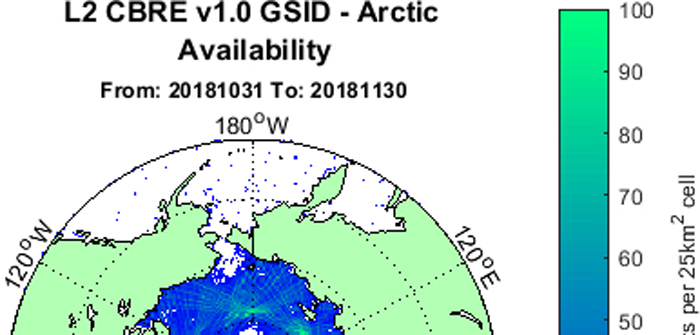New datasets from Surrey Satellite Technology (SSTL) and the National Oceanography Centre (NOC) have demonstrated how reflections of satellite navigation signals from space can map polar sea ice.
The measurements of Arctic and Antarctic sea ice were taken by SSTL’s small satellite, TechDemoSat-1, launched in 2014, which carries the SGR-ReSI, an instrument to measure ocean wind speeds using GNSS reflectometry.
With European Space Agency funding, NOC developed algorithms to estimate the wind speed from GNSS reflections, and has added the ability to discriminate between ocean and ice.
By exploiting the way GNSS signals are used as radar sources, it is believed that the ice edges can be detected with a higher resolution than using passive sensing methods, and the information is potentially valuable for shipping and offshore energy, as well as climate and polar ice research.
Phil Brownnett, managing director of SSTL, said, “This is another important demonstration of the benefits of GNSS-Reflectometry for both commercial and scientific communities. SSTL, in collaboration with partners, has taken this new technique from feasibility to a world-leading capability, which will see new missions uncovering further applications over ocean, ice and land.”
Giuseppe Foti, senior scientist of NOC, added, “These recent results show how collaboration between academia and industry is critically important to improve our understanding of ocean and ice processes that have a global impact on our planet.”
The SGR-ReSI instrument from SSTL is flying on the eight-satellite NASA CYGNSS mission launched in 2016 to measure hurricanes. The sensor can be carried on a very small satellite and could offer low delay, high accuracy ice edge mapping in addition to the other benefits GNSS reflectometry brings over land, ice and ocean in the future.



